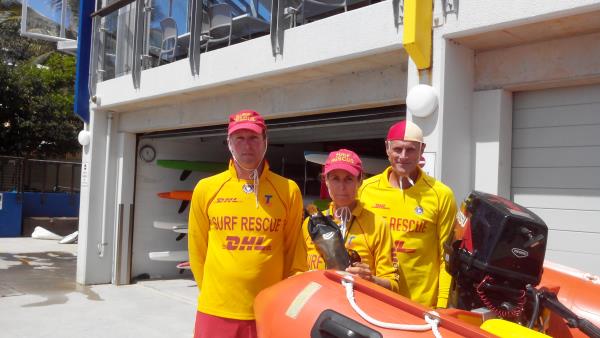
By RON LANE
THE recent crash of the ultra-light aircraft at Noosa Main Beach on Sunday 29 March at about 7am, was indeed a tragedy. However the response of Noosa’s rescue and emergency organisations shows that when the unfortunate occasion does arise, the teams have a system that is equal to any, giving those involved every chance of survival.
What follows gives a good indication as to the teamwork and steps required when helping those in peril.
As members of the Noosa Heads Surf Life Saving Club were setting their flagged area for Sundays patrol, they were approached by a breathless member of the public who said an ultra-light aero craft had been seen plunging into the sea approximately one hundred meters out from the mouth of the Noosa Bar.
The man who had witnessed the incident immediately ran from the bar region to raise the alarm. After hearing his remarks patrol captain Lorna Macchia immediately dispatched her Inflatable Rescue Boat (IRB) team to the area. Patrol radio officers also notified all relevant support groups.
“On arrival in the area we could see a wheel of the aircraft and on approaching found what appeared to be the pilot floating some 10 metres from the craft,” IRB driver Richard Webber said.
“It was a male person floating on his back and he appeared to be unconscious.
“Crew member Julian Reid and I were able to bring him on board and as he was breathing, we quickly returned to the patrol beach.”
Patrol members immediately began working to stabilise their patient and as this was commenced paramedics arrived on the beach to take control.
After working for approximately one hour, the level of stability required for transportation was achieved. The patient was then transported by helicopter to hospital. Also at this time as all precautions were being taken, IRB crew member Julian Reid, who during the rescue had become covered in aviation fuel was thoroughly soaped and washed down under the supervision of paramedics.
After the patient was removed a debriefing was held for all patrol members involved. Chaired by Duty Officer from Operations Support Group Guy Tanner, this enabled lifesavers to double check their performance and also ensure that all members are themselves calm and settled.
“Sometimes some of our people who are very young maybe a bit shaken up by their experience and this gives us a chance to check and ensure that everything is ok,” Tanner said.
“These sessions are a vital part of our procedure. In some cases they can not only become a learning curve for us but also gives the lifesaver a chance to look at themselves, and see how they react in a time of crises.”
As a result of the debriefing the following points became apparent and happy to relate all were positive.
“The leadership of patrol captain Lorna Macchia was good; this lady was extremely cool headed and organised.
“Perhaps the most important aspect of all in a rescue of this nature is the response time and this was exceptional,” said Tanner.
“From the time of launching of the IRB craft, to the recovery of the patient, return to the beach, and the arrival of the support teams, paramedics and fire and rescue units the response time was very good.
“This tells us that those who come to holiday in our region are, in time of trouble covered by a rescue system that is second to none.
For several weeks now Noosa Today has kept our people informed of the ongoing training of IRB drivers and crewies from Sunshine Beach and Noosa Heads.
Sunday’s rescue only serves to emphasise that the time and money spent in this area is time and money well spent.






